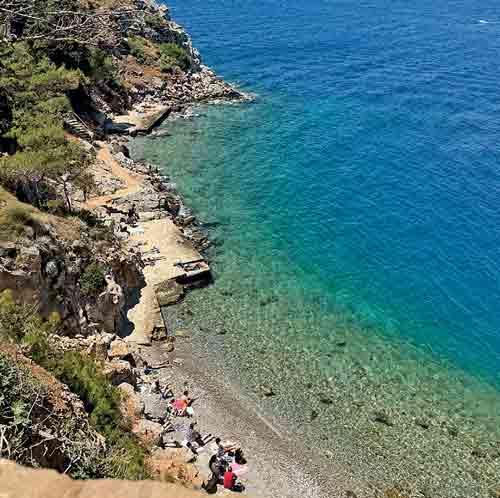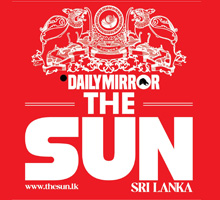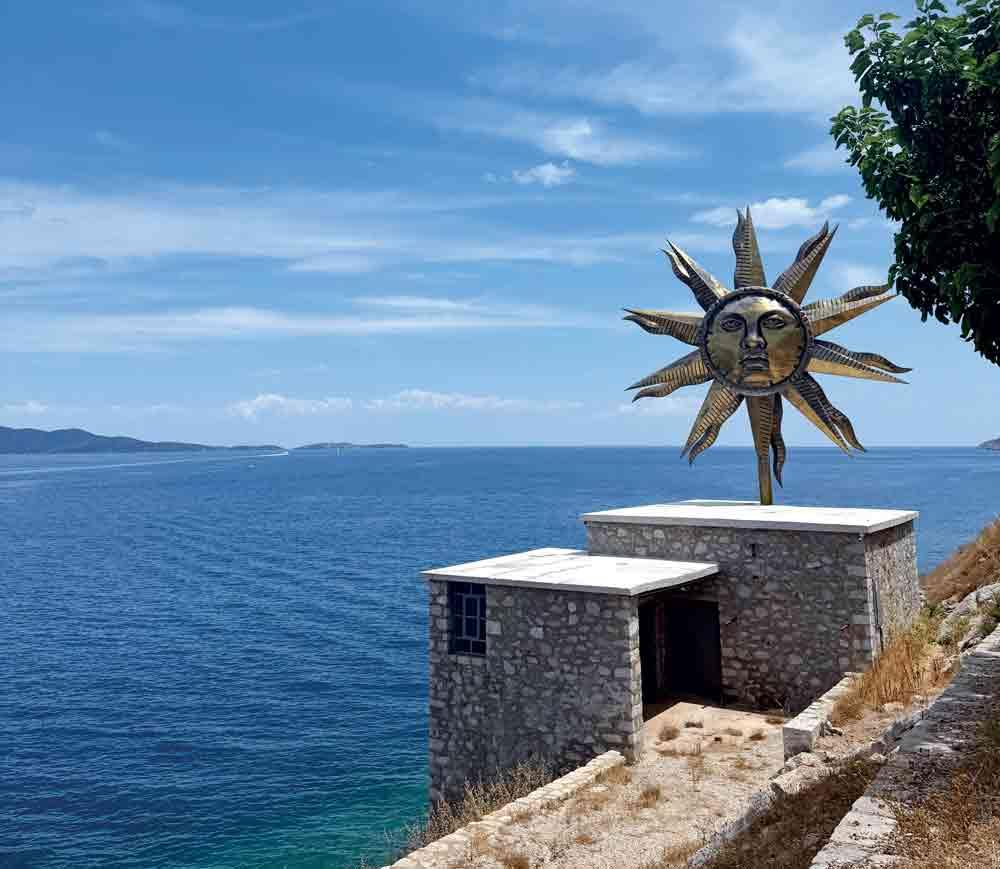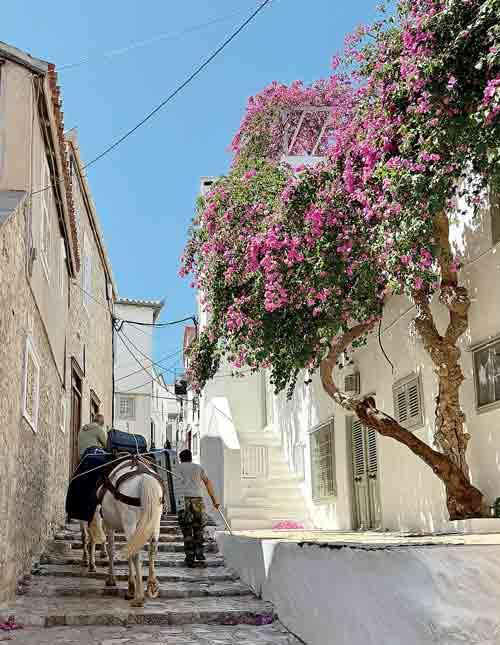Savouring Hydra
 In a tiny taverna in Hydra, Greece, sunlight drizzles through the leaves of the grape vine that snakes its way up the wooden pillars. Perched on a cliffside, below you is a tangle of olive, citrus and fig trees, all drooping down, heavy with fruit; beyond that, the azure Aegean Sea glistens in the sunshine. Soon, delicious dishes emerge, and the rickety table begins to groan. Fried calamari, plump olives, grilled fish, Greek salad topped with a fat slab of feta and a sprinkle of fresh oregano, marinated sardines drowned in olive oil and thick, crusty bread, ready to be torn apart and dipped into the liquid gold. I would liken a visit to Hydra to a long, lazy lunch at a Greek taverna. The kind of lunch that begins at noon and ends in the haze of late afternoon. Hydra is a place where the sun is high, the wine is cool, and no one is watching the clock. No rush, no cars, no pressure, Hydra is a place to be savoured.
In a tiny taverna in Hydra, Greece, sunlight drizzles through the leaves of the grape vine that snakes its way up the wooden pillars. Perched on a cliffside, below you is a tangle of olive, citrus and fig trees, all drooping down, heavy with fruit; beyond that, the azure Aegean Sea glistens in the sunshine. Soon, delicious dishes emerge, and the rickety table begins to groan. Fried calamari, plump olives, grilled fish, Greek salad topped with a fat slab of feta and a sprinkle of fresh oregano, marinated sardines drowned in olive oil and thick, crusty bread, ready to be torn apart and dipped into the liquid gold. I would liken a visit to Hydra to a long, lazy lunch at a Greek taverna. The kind of lunch that begins at noon and ends in the haze of late afternoon. Hydra is a place where the sun is high, the wine is cool, and no one is watching the clock. No rush, no cars, no pressure, Hydra is a place to be savoured.
For Starters…
A speck in the ocean, Hydra (pronounced ee-dra), is only a 90-minute ferry away from Athens. Despite its proximity to the capital, it is a world away from the crowded Athenian streets. As soon as you set foot on the island, the change is immediate. Although you’ll be at the port, the busiest part of Hydra, there won’t be anyone shoving you trying to walk past. Instead, people leisurely sip a freddo espresso or an Aperol Spritz under breezy pergolas. Gone are the sounds of revving engines and tooting horns; replaced with the clip-clopping of donkeys' hooves, the only mode of transportation on the island, that wind their way through the nameless cobblestone streets. Although it is one of the quieter Greek islands, Hydra has long been a hangout for bohemians. Its cool turquoise waters and rugged coastline have lured artists and creatives for centuries, including Henry Miller, Lawrence Durrell and even a young Leonard Cohen, who lived on the island for several years. Hydra, however, has forever been eulogised in ancient Greek mythology as the nine-headed serpentine monster with the same name, who was slain by Hercules. Although this dreamy island is a far cry from a monster protecting the gates to the underworld…
And Then For Mains
As far as activities go, there’s not much to do on Hydra – but that’s the point. Here, days spill into one another, as fluid as their generous servings of olive oil. Take a cue from the island’s most beloved residents, its 3,500 stray cats, and enjoy the sweetness of stillness. Laze on sunbaked rocks by the water, go for a lazy sea swim, read, explore the island on foot, wander through the shops (there are so many lovely boutiques) or just take a nap. The island offers quiet time in abundance.
If, however, you do get restless, Hydra has a burgeoning arts scene and during the summer months, the island’s galleries host numerous exhibitions, art residencies and even an outdoor cinema. Visit Wilhelmina’s, a contemporary art gallery in Mandraki Bay, showcasing international and Greek artists.
On the way to Mandraki, you’ll pass the DESTE Project Space Slaughterhouse, which is in a small limestone building that hugs the side of a cliff. The space hosts a series of exhibitions, but its most famous feature is the Jeff Koons Apollo sundial, which has become a prominent landmark on the island. A little closer to town is the Old Carpet Factory Recording Studio and Art Residency. Set in an 18th-century mansion, once the home of a prominent admiral and later a carpet-weaving factory, creativity just drips from its whitewashed walls.
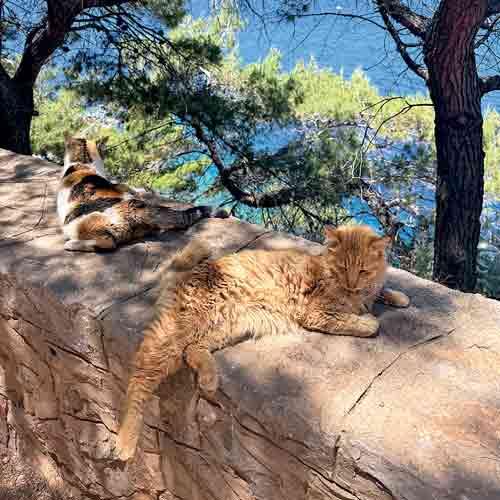
Something Sweet
The sun beats down harder and stronger in Greece, and the best way to cool off is with a dip in the ocean. There are lots of “beaches” that you can get to on foot, but most of the time, these are just rocky outcrops by the sea, and you can just dive into the ocean. If you’re looking for a beach bar, either Hydronetta or Spilia will be your best bet. Both bars have a private beach with stone steps that directly lead to the water, plenty of space to lounge, and are easy to walk to. But if you don’t want to burn off your hard-earned holiday calories, then take a water taxi to one of the more far-flung beaches like Mandraki Bay or Bitsi Beach, a pebblestone beach fringed by a pine forest.
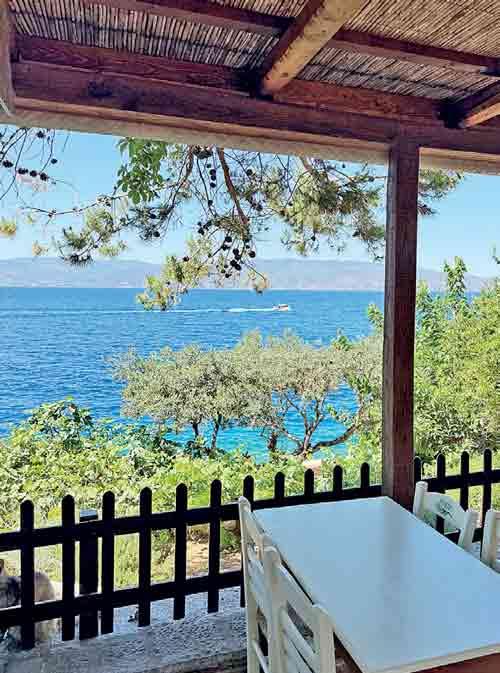
For those who still have more energy left (please tell me your secret), you can hike to either Prophet Ilias Monastery or Mount Eros, the highest peak on the island. The monastery was established in 1813 and has a stunning birds-eye view of the island and the Peloponnese coast. The climb up is hot and steep, but it also gives you a glimpse into the island’s maritime history. Before the Greek War of Independence, Hydra was a frequent target for pirate raids. Most inhabitants chose to settle high up in the mountains and only moved closer to the coast when Hydra became a prominent naval force in the 18th century. Today, Hydra’s famous cats are living remnants of its maritime past, once kept aboard ships to keep rat infestations at bay.

Finally, A Night Cap
Once the sun sets and the afternoon heat breaks, it’s the perfect time to wander outside again. Now, sleepy Hydra comes to life. The streets are abuzz with music, people chatting and sipping on ice-cold ozou or mastiha. Most of the activity is concentrated in a tiny square, fondly referred to as the Bermuda Triangle, because you can quickly lose track of time. Amalour bar quickly became our home base when we were in Hydra, since it’s such a small island, you keep running into the same people, so it’s easy to make new friends. For something a bit more low-key, enjoy a drink at the Windmill Bar, where low cane chairs surround a medieval turret and watch the sun dip below the Aegean Sea.
Every long lunch ends eventually, but the best ones stay with you, and that is Hydra. It is a feast for the senses that encourages you to slow down and savour the richness in the simplicity.
